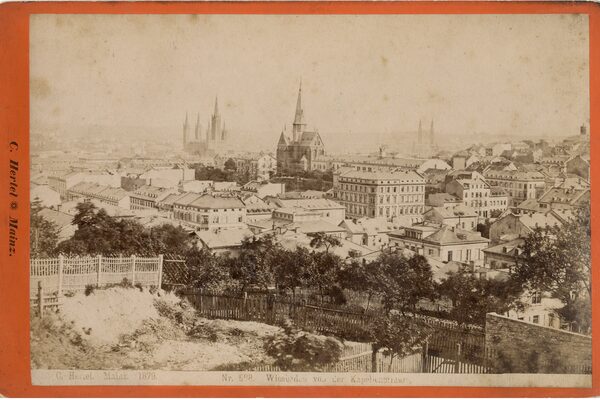Places of historicism - Bergkirchenviertel
Wiesbaden is a city of the 19th century. This unique development is based on the fact that today's Hessian state capital grew from a modest small town with 2,500 inhabitants in 1800 to a large city with 100,000 inhabitants in 1905.
The Bergkirchen district
In 1809, the expansion of Nerostrasse began in order to create inexpensive living space for lower-income citizens away from the gaze of guests. For this reason, the buildings were single-storey and rather unadorned. This is also the reason for the single-storey, rather unadorned design. The houses built between 1808 and 1811 were popularly known as the "Katzelöcher".
When the Bergkirchen district threatened to become a poor quarter due to poor construction work and the migration of small agricultural businesses, efforts were made to achieve a more solid construction and design following a ducal decree.
As with other historic buildings and districts, the Bergkirchen area was threatened with demolition in the 1960s. However, the European Monument Protection Year in 1975 saved the historic buildings. Today, the district has been excellently renovated.
The Bergkirchen district
Further information
City archive
Address
65197 Wiesbaden
Postal address
65029 Wiesbaden
Arrival
Notes on public transport
Public transportation: Bus stop Kleinfeldchen/Stadtarchiv, bus lines 4, 17, 23, 24 and 27 and bus stop Künstlerviertel/Stadtarchiv, bus line 18.
Telephone
- +49 611 313022
- +49 611 313977
Opening hours
Opening hours of the reading room:
- Monday: 9 a.m. to 12 p.m.
- Tuesday: 9 am to 4 pm
- Wednesday: 9 am to 6 pm
- Thursday: 12 to 16 o'clock
- Friday: closed
